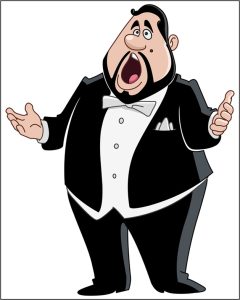Opera: What Makes it Work?
In-Person – 1:10 pm – 2:50 pm
March 12, 19, 26, April 2
We discuss different operas and, specifically, how the composers have used arias, choruses and plot devices to create structures. Our emphasis is on listening and sharing our impressions.
- Week 1: Another Opening, another show! The big production number: Verdi’s Otello; Intimacy: Tchaikovsky’s Eugene Onegin; a formal prologue: Leoncavallo’s I Pagliacci
- Week 2: How’s your Second Act? Whether comedy or tragedy, the story of the opera has to work through obstacles. Show stoppers: Puccini’s Madame Butterfly, Delibes’ Lakme; Turns of fortune: Donizetti’s l’Elisir d’Amore or The Daughter of the Regiment; Big production numbers: Rossini’s The Barber of Seville
- Week 3: End with a Bang! All Hell breaks loose: Boito’s Mefistofele; How long does it take to die?: Wagner’s Tristan and Isoldeor Gotterdammerung; Over in a minute: Verdi’s Il Trovatore or Don Carlo Halevy’s La Juive; All together now: Mozart’s The Marriage of Figaro; The soprano has the last word(s): Rossini’s La Donna del Lago or Bellini’s Il Pirata
- Week 4:Putting it all together; an examination of major moments from a single opera
Jeffrey Lowin has been an opera fan for more than 70 years. He has attended over 200 different operas worldwide. At LLI, he has taught “Smile: It’s Opera” and “I am Not Afraid of Opera.” He has also taught at the Stamford Public Library and Learning in Retirement programs.


